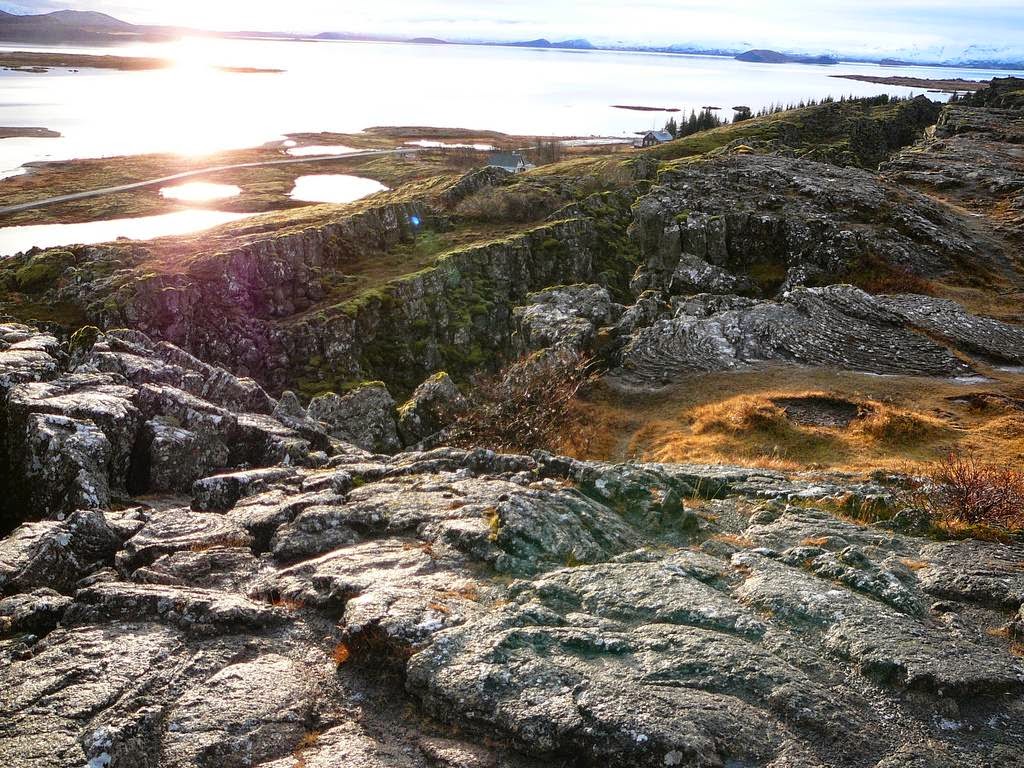
This is one of the few places above sea level where you can see with your own eyes what happens when two major tectonic plates drift away from each other. In fact, Iceland owes its very existence to the tectonic processes which have played out along the Mid-Atlantic Ridge for millions of years. It was born of the ridge, which runs right through it.

Iceland rose above the waves as a direct result of the divergent and increasing boundary between the Eurasian and North American tectonic plates aided by the activity of the island’s own hotspot. The inexorable movement of the plates away from each other caused colossal eruptions and the resulting lava created rift valleys.

The lava would cool and then, little by little the movement of the plates would rift the lava fields apart directly above the tectonic plates. What you can see in Iceland today is the result – lengthy valleys of sheer rock, constrained by the parallel faults.



You have to go a long way back to discover the point at which all this activity started. The northern part of the ridge began to diverge around 150 million years ago. The southern part followed suit sixty million years later. Centimeter by centimeter this deviation continues to this day and tectonic activity inevitably goes hand in hand with earthquakes not to mention the eruption of volcanoes both old and new. Icelanders expect an eruption at least once a decade.


At Thingvellir (written Þingvellir in Icelandic), which was also the site of the world’s first parliament, you can see part of this vast rift system. Indeed, fissures form the eastern and western boundaries of the parliament lands. Although to our eyes they do not move, the distance between both sides of the plate boundaries increases by a few millimeters each year. When an earthquake strikes they have been known to shift by considerably more. Some have become lakes and waterfalls abound.


Many of the most momentous events in the human history of Iceland have taken place here, which is appropriate. Without the divergence of the Eurasian and North American tectonic plates which created this foreboding landscape there would not even be an Iceland.



The site’s geological exclusivity lies primarily in the fact that it is one of the only places on Earth where the properties of diverging tectonic plates are visibly present on dry land. Thingvellir became a National Park in 1928 and is now a designated UNESCO World Heritage Site.


Almannagjá is the largest example of where the continental drift between the two plates can be seen – it is the size of a small canyon. It is also one of the newest rifts and was formed about nine thousand years ago. Lava flowed down the plateau and over time shifts in the earth’s crust tended downward which created the rift. In places the walls of Almannagjá are over thirty meters high.


There is a legend in Iceland that Thingvellir is the final resting place of the Holy Grail, brought there by the poet and politician Snorri Sturluson in 1217 (accompanied by “eighty men from the east”). Yet despite this and other myths and legends that surround the place, inculcated no doubt by the sheer spectacle of the countryside, it is the geology which is truly astonishing and, at least in human terms, everlasting.

Source
